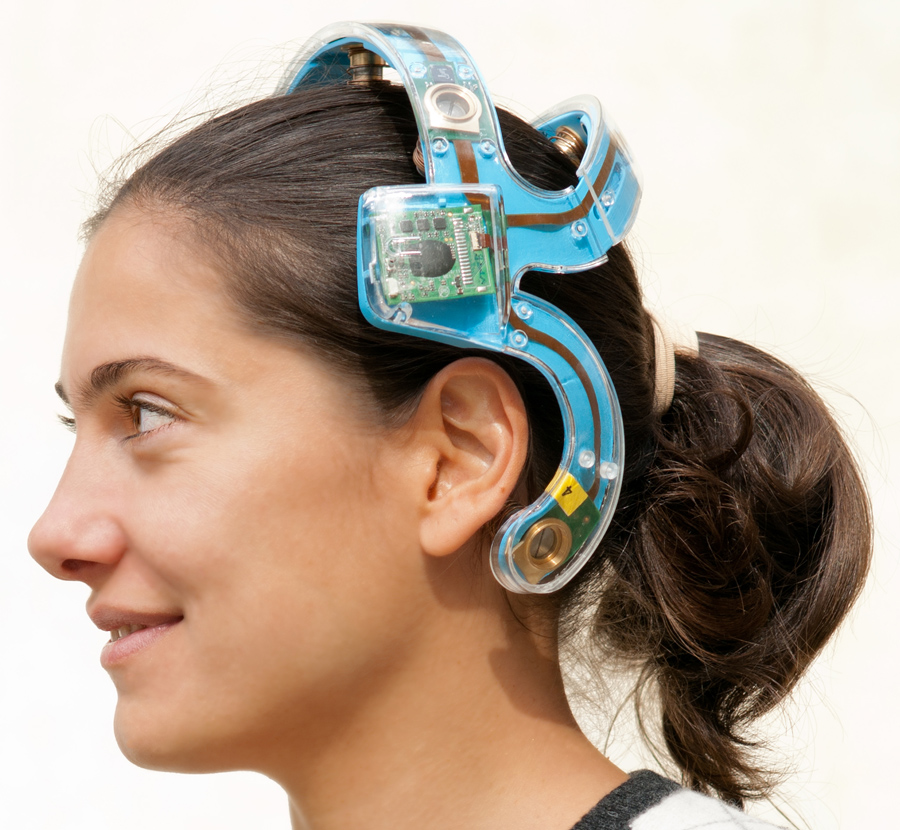A wireless low-power, high-quality EEG headset
October 10, 2012
Imec, Holst Centre and Panasonic have developed a new prototype of a wireless EEG (electroencephalogram, or brain waves) headset designed to be a reliable, high-quality and wearable EEG monitoring system.
How it works
The EEG data is transmitted to a receiver located up to 10 meters away. The headset integrates active electrodes (reduce the susceptibility of the system to power-line interference and cable motion artifacts to improve signal quality), EEG amplifier, microcontroller, and low-power wireless transmitter.
The receiver can continuously record 8-channel EEG signals while concurrently recording electrode-tissue contact impedance (ETI), a measure of contact quality.
The system has a high (>92 dB) common-mode rejection ratio (to reduce interference from power lines and other sources) and low noise (<6 µVpp, 0.5-100Hz), with configurable cut-off frequency (to filter out high or low frequencies).
The heart of the system is the low-power (750µW) 8-channel EEG monitoring chipset. Each EEG channel consists of two active electrodes and a low-power analog signal processor. The EEG channels are designed to extract high-quality EEG signals under a large amount of common-mode interference. The active electrode chips have buffer functionality with high input impedance (1.4GΩ at 10Hz), enabling recordings from dry electrodes, and low output impedance reducing the power-line interference without using shielded wires
The system is integrated into imec’s EEG headset with dry electrodes, which enables EEG recordings with minimal set-up time. The small size of the electronics system, measuring only 35mm x 30mm x 5mm (excluding battery), allows easy integration in any other product.
